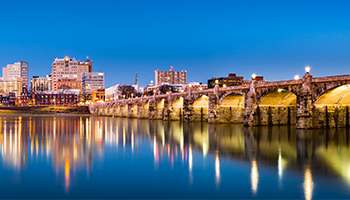Create a Helpful Career Map In 4 Steps
When planning a vacation, what’s the first thing you do before setting out? You plan your trip ahead of time. Your destination, potential stops, and route all need to be planned out so you don’t get lost or stranded. In a similar way, your career path is what gets you from point A (where you’re at now) to point B (where you want to be). Know what you want in your career, but unsure about how to get there? Look no further than a career map. However, how does one create a helpful career map? We’ve got you covered.

© fizkes / Adobe Stock
Establish Your End Goal
What are your career aspirations? Do you aspire to be head manager of the department, or foreman of the warehouse? Or something else entirely? Realizing your primary goal is one of the biggest steps in the process. It’s one of two major bookends to your career journey.
However, keep in mind a problem that arises from this step. You may trick yourself into choosing a goal that isn’t realistic, or isn’t something you actually want. A goal is unrealistic if there is no conceivable path for you (or anyone, really) to get there. A goal you don’t actually want might have many things you’re looking for, except you, for example, don’t like the industry, or the pay is below your standards.
To avoid these things, ensure that your goal is concrete and specific. Write down a specific job title in mind that you want, and avoid vagueness. Don’t say, “I want a good-paying job in [industry].” Instead, say, “I want to be a [position name], at [company name], with [skills] and [knowledge].”
Look At Where You’re At Now
The other important bookend to your career journey is the present. Where are you at right now, career wise?
In order to create a helpful career map, you need to be honest with yourself in this step. Look at everything, including things that make you look bad.
- What is your list of skills?
- How good (and bad) are you in those skills?
- What are your strengths and weaknesses?
- How do those strengths/weaknesses impact your job performance?
- Are there gaps in your skills/knowledge/expertise?
- Do you have any bad habits that you need to overcome?
Identifying all of these things, and more, will help you come closer to realizing where you’re at now.
Identify Milestones
You likely won’t achieve your end goal in a single step. It’s helpful to break down your career journey into milestones. Many people become overwhelmed when they look at where they’re at versus where they want to be. There might be too many unknowns in between that they get stressed out. Instead of looking at the bigger picture, adding milestones breaks the map down into smaller, easier to manage steps.
These milestones may vary. Some of them might be promotions, or they could be certifications. Others might be tied to training, job performance, or awards. Regardless of what it involves, you should create a helpful career map with these bite-sized in-between goals to make the overall map more manageable.
Ask For Help
You won’t get to the end of your career map without help. There’s simply no way around it.
Connections are a powerful thing these days. If you have a contact at a company you want to work at, ask them for help. Talk to them about these previous steps and what you discovered along the way. Tell them about your career aspirations. They may be able to give you some advice on how to get started. Of course, they might not be able to get you a job right away. However, having your goals out there might get your foot in the door, or, at the very least, start an insightful conversation. The goal here isn’t necessarily to get you the job; it’s to learn.
If you have a goal in mind at your current job, talk with your supervisor/manager about your intentions. Talk with them about your goals in a respectful manner. Check to see if there are any ways you can get a jump-start on your career map milestones.






